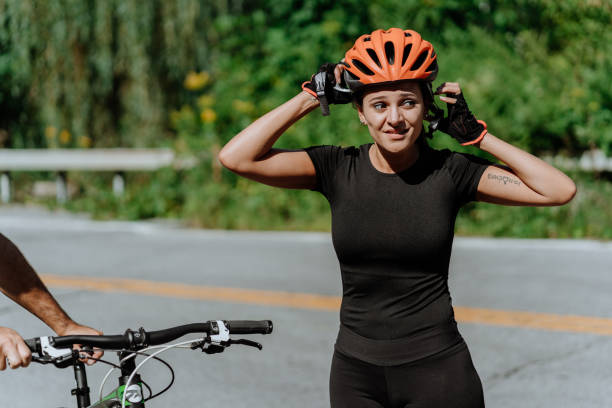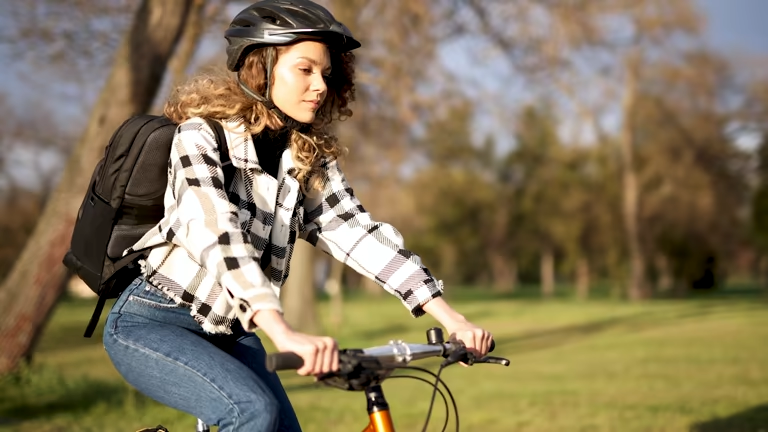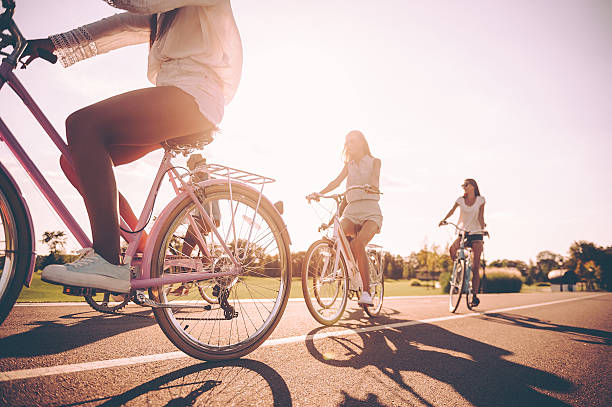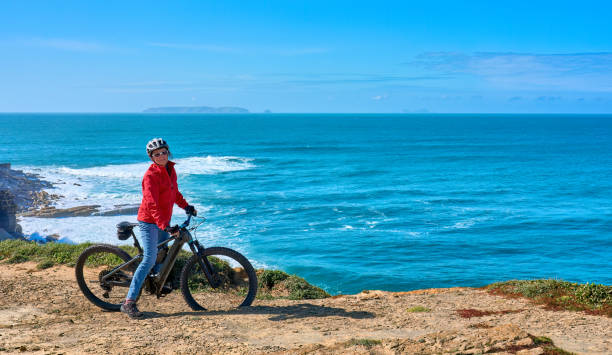Understanding Your Bike: Anatomy for Beginners
This post contains affiliate links. This means I will make a commission at no extra cost to you should you click through and make a purchase. Read the full disclosure here.
Know your ride, love your ride.
Let’s be real—bikes can look a little intimidating at first.
So many parts. So many names.
What’s a derailleur? Should I care? Where even is the derailleur?
But don’t worry—this isn’t a mechanic’s guide. This is the no-jargon, no-judgment breakdown for women who just want to feel more confident around their bike (and maybe impress someone at the next ride).
Here’s what’s what—made simple.
Frame: The Bike’s Backbone
The frame is the big, solid part everything connects to. It’s usually made from:
– Aluminum (light + affordable)
– Carbon fiber (super light + pricey)
– Steel (a little heavier but comfy and strong)
Think of it like the skeleton. It supports you, shapes the ride, and comes in different styles—step-through, road, mountain, cruiser.
👉 A great first bike: Schwinn Discover Hybrid Bike
Handlebars: Your Steering Wheel
They help you steer, brake, and hold on for dear life when you hit a bump.
Common types:
– Flat bars – easy, upright position (great for comfort and casual riding)
– Drop bars – curved and low (used on road bikes, more speed-focused)
– Cruiser bars – wide and swept back (hello, beachy vibes)
Want comfy grips?
👉 Try Ergon GP1 Comfort Grips
Brakes: Your Best Friend
Please don’t skip these.
Two main types:
– Rim brakes – squeeze the wheel rim (lighter, cheaper)
– Disc brakes – squeeze a disc on the wheel hub (stronger, better in rain)
Brake levers are on your handlebars. Practice squeezing them gently to feel how your bike slows down.
Wheels & Tires: Rollin’ On
Wheels are the full circle. Tires are the rubber part.
Bigger tires = smoother ride
Thinner tires = faster ride (but you’ll feel more bumps)
Make sure your tires have air.
Check the side of the tire for PSI range, then use a pump with a gauge.
👉 Vibrelli Floor Pump with Gauge
Saddle: Your Seat (Yes, It Can Be Comfortable)
A lot of women assume bike seats are just…painful. They don’t have to be!
Look for:
– Wider seats with padding
– Gel or memory foam
– A cutout in the middle for pressure relief
Also, wear padded shorts or try a seat cover for longer rides.
Pedals: Where the Power Starts
These are where your feet go, of course—but there are types:
– Flat pedals – basic, no fuss
– Clipless pedals – for attaching special shoes (not beginner-friendly right away)
Just start with flat pedals and your favorite sneakers. Simple is good.
Chain & Gears: Your Power Transfer System
The chain moves when you pedal, transferring energy to the back wheel.
Gears help you ride uphill, downhill, or cruise without too much leg burn.
Don’t stress about mastering shifting right away. Just start noticing:
– Left shifter = front gears (big jumps)
– Right shifter = rear gears (small tweaks)
Keep that chain clean and lubed.
👉 Finish Line Dry Bike Chain Lubricant
Derailleur: The Little Guide That Shifts Gears
It’s the small part near your chain that “derails” the chain from one gear to another.
If you hear clicking or skipping when you change gears, the derailleur might need adjusting. But don’t worry—that’s what bike shops are for.
Crankset & Bottom Bracket: Power in Motion
The crankset is the part your pedals attach to. It spins when you pedal.
Inside the frame is the bottom bracket, which helps everything turn smoothly.
You don’t need to mess with this right now—just know what it’s called when someone mentions it.
Final Thoughts
You don’t need to memorize all this. You don’t need to become a bike mechanic.
But knowing the basics gives you confidence.
It helps you ask the right questions, notice when something feels off, and feel like, “Yep—I know this machine. She’s mine.”
One pedal at a time, you’re becoming a rider who knows her stuff.








